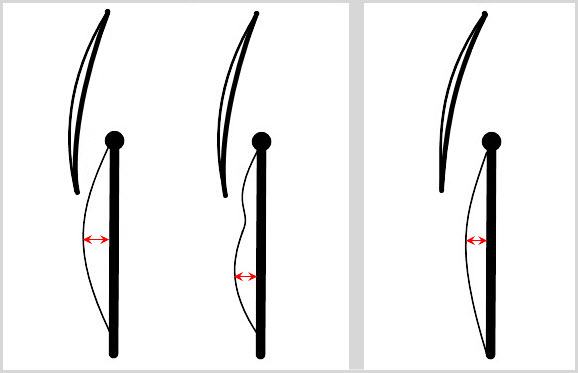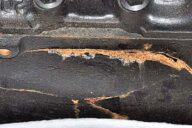Here are some great sail trim tips from our friend Capt. John of skippertips.com…
What sailing control gets overlooked more than any other aboard most any sailboat? You may be surprised to know that this sail trim device can power up your mainsail in light air or help balance your sailboat in heavy air. Use these sail trim secrets for maximum sail power. Enjoy this excerpt from Captain John’s soon-to-be-released book on easy sail trim tips and techniques.
You may have heard the rather simplified explanation that fuller sails give a more powerful shape and flatter sails a faster shape. But certain controls on your mainsail will shape specific areas.
For example, the halyard or Cunningham help keep the draft forward of the half-way point and help to shape the leading edge (luff) of the mainsail. Your boom vang and mainsheet help control the leech so that the air exits the mainsail without turbulence.
But how do you control the lower part of the mainsail? That big, billowy area located from luff to leech in the lower half? Enter the often forgotten outhaul.
Not many controls are as easy to learn to use–and yet the outhaul often stays tucked away near the end of the boom. When you first bend on (attach) the mainsail to your boat, the outhaul becomes the first control attached.
Indeed, you thread the clew at the foot of the mainsail through the slot of the boom to the end and tie off the clew ring with the outhaul. Then, you attach the tack to the gooseneck fitting and bend on the luff via slugs or slides to the aft mast slot or track.

Watch for backwinding on the forward half of your mainsail (left panel). You will lose power, draft will shift aft and weather helm and heeling can increase. Flatten the mainsail in breezy conditions (right panel). Use the halyard or Cunningham, along with the outhaul and other trim controls to maintain balance and performance. See more below.
In light air, you want a fuller sail. If you have the outhaul too tight, the lower half of the main will be flat. Your sailboat might feel lifeless. Ease the outhaul a bit to increase the fullness in the lower half of the main. This should result in good acceleration and power.
In heavy air, you want a flatter sail. Sails tend to get fuller after you’ve been out sailing for several hours. Too much fullness in the mainsail could lead to a condition called “backwinding” where the air flowing off the headsail strikes the mainsail and causes it to luff. Your boat will lose power and weather helm will increase.
Take a look at the two illustrations in the left panel above. Here, we are close hauled, with the boom set close to the centerline. We have the Genoa (or jib) trimmed a few inches off the spreaders.
Notice how the outhaul does not have enough tension. The mainsail foot has become shorter (tack to clew distance) with too much slack in the outhaul. Sail depth (draft) increases as indicated by the red double-headed arrow.
Project how the air will flow from the Genoa leech onto the mainsail. It will strike the mainsail in the forward half to cause flutter (called “backwinding”). Backwinding depowers the mainsail. Draft will shift aft (red double-headed arrow). The steerer will have to fight the wheel or tiller in a stiff breeze to maintain course.
Now, turn to the illustration in the far right panel. We have tensioned the outhaul. Note how the foot of the mainsail has now stretched full length from tack to clew. This flattens the mainsail down low and reduces draft (red double-headed arrow).
If the main still backwinds after this adjustment, ease the Genoa a few inches off the spreaders until you put that flutter “to sleep”. Look at the right panel; we have eased the Genoa just a bit to form a much more efficient slot between the Genoa and mainsail. Your boat should come alive with power and speed!
Remember to use your other mainsail controls along with the ouhaul. Maintain draft position with the halyard or Cunningham. Boats with adjustable backstays can add backstay tension to help flatten the mainsail even more.
Test the helm after you make any sail trim adjustment. The wheel or tiller should require no more than three or four degrees to maintain a course in any sailing weather. Trim your boat with this in mind–balance and harmony equal peak performance.
Mainsail Outhaul Trim Summary:
Ease the Outhaul to power up your mainsail in light air or on reaches. Trim (tension) the outhaul to flatten the mainsail for breezy conditions. Follow this easy summary on mainsail outhaul trim:
Increase Fullness to:
– Add power in light air or on reaches.
– Punch through a choppy sea in light sailing winds.
– Reach long distances for more speed.
Decrease Fullness to:
– Avoid excessive weather helm in gusty winds.
– Prevent backwinding from the Genoa or jib.
– Balance the boat in heavy winds for peak performance.
~~~~~~~~~~~~~~~~~~~
Learn to sail like a pro when you tap the power of your mainsail outhaul. Gain better balance, power and performance aboard your sailboat–wherever in the world you choose to sail or cruise!












